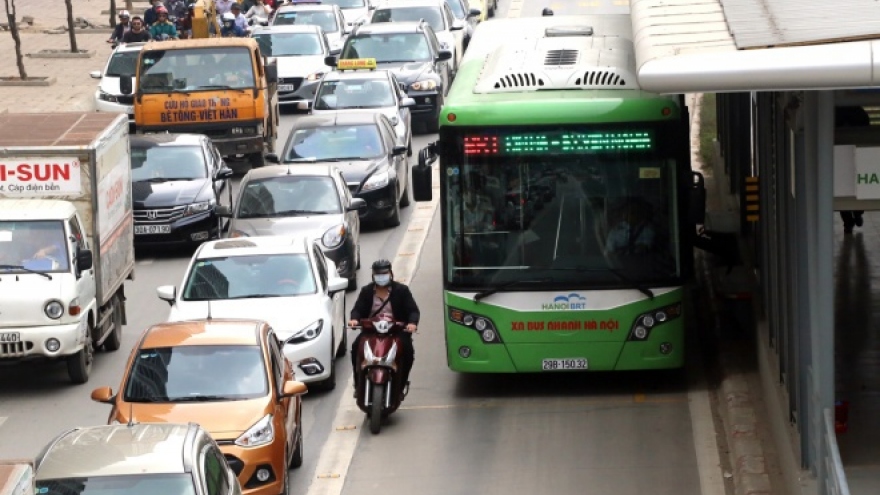HCM City promotes key transport projects
HCM City has recently called for private investment under the public-private partnership (PPP) model to kick off several key transport infrastructure projects under in the context of a limited State budget amid increasing transport demand.
 |
In mid-2015, the municipal People’s Committee accepted to arrange 72 plots of land for resettling people who had been removed to build the connecting road between Vo Van Kiet Boulevard and HCM City – Trung Luong Expressway in Tan Kien commune, Binh Chanh district. The project was started on October 2015 with first-phase investment of around 1.6 trillion VND (71 million USD), excluding expenditure for ground clearance. The project was expected to be constructed within 20 months.
This road is expected to connect all transport to the highway with a fast road.
It also completes the city’s modern transport system through the city from Cat Lai intersection in Hanoi Highway, beginning point of HCM City – Long Thanh – Dau Giay Expressway, through East-West Highway (Vo Van Kiet Boulevard) and to HCM City - Trung Luong Expressway.
The project creates a good connection through the southeast provinces – HCM City – Mekong Delta.
One of the intersections with the most traffic congestion is that of Southern Saigon Boulevard, Nguyen Van Linh Boulevard and Nguyen Huu Tho Street.
To cope with this congestion, the city authorities have agreed to invest 839 billion VND (37.3 million USD) for the first phase of the project to ease traffic here. There will be two 480m tunnels built in the intersection.
After five years of delay, a flyover road Binh Tien through Vo Van Kiet Boulevard and Tau Hu and Doi canals, linking Districts 6 and 8, was finally approved with total investment of 3.5 trillion VND (155 million USD) during 2016-2020. The project was approved in 2010 but due to limitations of land compensation, it had been delayed.
The flyover road is expected to ease traffic congestion from downtown to southern Saigon urban area when series of bridges, such as Nguyen Tri Phuong, Nguyen Van Cu, Kenh Te, Y, Cha Va, are overloaded.
Other transport projects, such as one more exit from Nguyen Van Cu bridge to Vo Van Kiet Boulevard, were kicked off in 2016 to ease congestion from District 8 and Binh Chanh to District 5 and other downtown districts.
The project to link Pham Van Dong street with the intersection of Go Dua and National Highway No 1 was also approved to complete Belt Road No 2.
Despite the fact that many important transport projects have been kicked off, HCM City still faces difficulties in exchanging land to transport infrastructure construction.
Under regulations, HCM City must have a clean land fund to bid. Money from such bidding will be invested for transport infrastructure. However, due to limitations of capital, the city hasn’t been able to create its own clean land fund. Exploitation of land along new roads faces the same problem as local authorities do not have money for compensation.
Many enterprises are ready to pay money for land compensation, but the municipal authorities are not allowed to appoint them to exploit such lands and these clean lands must be bid.
“Such a legal frame work has restricted attracting social investment for transport,” Bui Xuan Cuong, director of the municipal Transport Department was quoted as saying in the Thoi bao Kinh te Vietnam (Vietnam Economic Times) newspaper.
There are so many other important transport infrastructure projects still waiting due to limitation of funds, land and an out-of-date legal framework, such as a 9.5 trillion VND (422 million USD) project to expand National Road No 22 to link HCM City and Tây Ninh province, rapid and green bus in Mai Chi Tho and Vo Van Kiet boulevards, 1.75 trillion VND (78 million USD) for underground parking plots in Le Van Tam Park, 740 billion VND (33 million USD) underground parking in Trong Dong Theatre in District 3, and 3.2 trillion VND (142 million USD) for Hoa Lu Stadium.



